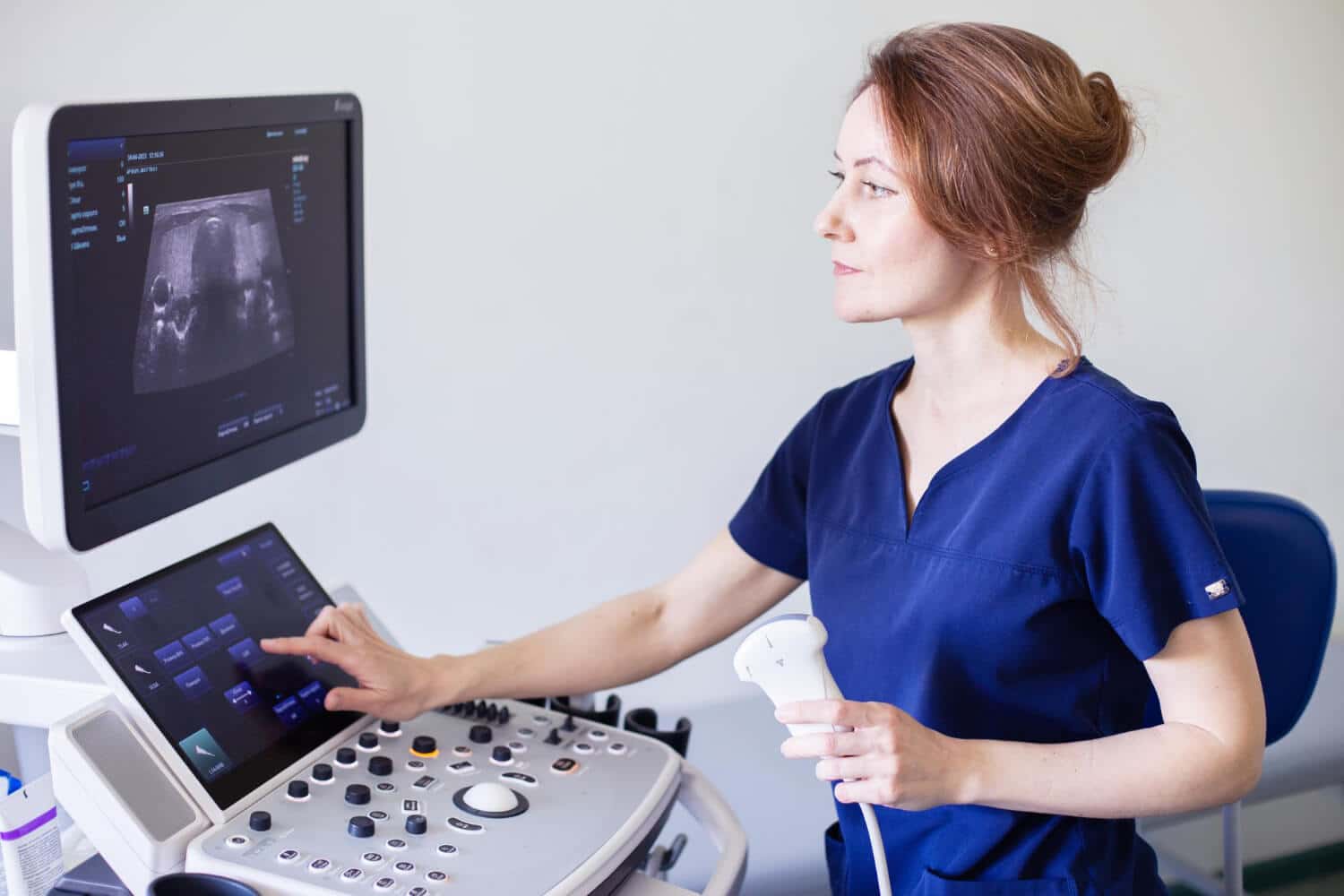Ultrasound imaging, also known as sonography, is a non-invasive medical process that uses sound waves to generate images of the inside of the body. This guide offers an easy understanding of how ultrasound images work and what information they can deliver.
The Significance of Ultrasound in the Medical Field
Ultrasound technology has become a cornerstone in the medical turf, wielding unmatched value in diagnostics and patient care. Its non-invasive character, devoid of ionizing radiation, makes it a harmless and extensively handy imaging apparatus. Ultrasound plays a central role in obstetrics, allowing the monitoring of fetal expansion with outstanding clarity.
It helps visualize internal organs, identify abnormalities, and accurately guide medical processes. The real-time imaging eligibilities of ultrasound aid active assessments, and it helps analyze various medical conditions. This multipurpose technology has revolutionized medical imaging, improving diagnostic precision and patient outcomes, from cardiovascular assessments to musculoskeletal examinations.
How Ultrasound Works
Ultrasound machines release high-frequency sound waves, which bounce off inner structures and create echoes. These echoes are then transmitted into images by the ultrasound machine. The procedure is similar to how bats use echolocation.
Common Uses of Ultrasound
Pregnancy Monitoring: Ultrasound is broadly accepted for tracking fetal growth during pregnancy. It assists in evaluating the baby’s development heartbeat and spots any potential issues.
Abdominal Imaging: Ultrasound can envisage organs like the liver, kidneys, and gallbladder. It helps detect glitches or evaluate the occurrence of stones.
Cardiac Ultrasound: Also known as echocardiography, this type of ultrasound scrutinizes the heart’s formation and function, delivering helpful information about its strength.
Musculoskeletal Ultrasound: It helps assess joints, muscles, and tendons, diagnosing conditions like arthritis or injuries.
Interpreting Ultrasound Images
Ultrasound images emerge as grayscale pictures. Fluid-filled structures characterize dark areas, while bright areas designate denser tissues. The practiced interpretation of these images is vital for precise diagnosis.
Understanding Shades of Gray
Diverse shades of gray in ultrasound images signify varying tissue densities. Darker shades specify less dense structures like fluid or blood, while lighter shades represent thicker tissues like bones.
Anatomy on Ultrasound
Bones Usually appear bright white or echogenic, casting shadows under them.
Fluid-filled Structures: Come out dark on the image, making them effortlessly evident.
Soft Tissues: Vary in shades of gray based on their density.
Doppler Ultrasound
Doppler ultrasound evaluates blood fluctuation by measuring the change in regularity of the ultrasound waves as they bounce off, stirring blood cells. This method helps assess vascular conditions.
Preparing for an Ultrasound
More often than not, patients experiencing ultrasound examinations typically need little to no preparation. For particular scans, fasting may be necessary. It’s indispensable to pursue any explicit instructions delivered by the healthcare provider.
Real-Time Imaging
One of the essential perks of ultrasound is its capability to supply real-time images. This enables healthcare professionals to scrutinize movements, such as a beating heart or a developing fetus, as they happen.
Limitations of Ultrasound
While ultrasound is a helpful diagnostic device, it does have some limitations. It may not offer comprehensive images of structures behind bone or air, and its efficacy can be operator-dependent.
Ultrasound is usually considered harmless with negligible side effects. The non-invasive character of ultrasound imaging poses little hazard, making it broadly used in medical diagnostics. Prolonged or needless contact with ultrasound waves, mainly in therapeutic applications, may lead to thermal effects, causing tissue heating. Some studies advocate carefulness during early pregnancy due to theoretical issues, although routine diagnostic use is considered safe. When administered by qualified professionals within recognized guidelines, ultrasound is a helpful tool with minimal side effects, ensuring its prevalent recognition and application in various medical fields.
ltrasound Safety
Ultrasound is considered secure with no known damaging effects. It does not use ionizing radiation, making it suitable for diverse medical applications, including prenatal care.
Understanding ultrasound images is a vital aspect of contemporary healthcare. From scrutinizing pregnancies to detecting musculoskeletal conditions, ultrasound plays a fundamental role. By grasping the essentials of how ultrasound works and interpreting grayscale images, people can better appreciate this non-invasive imaging method that continues to transform medical diagnostics.





